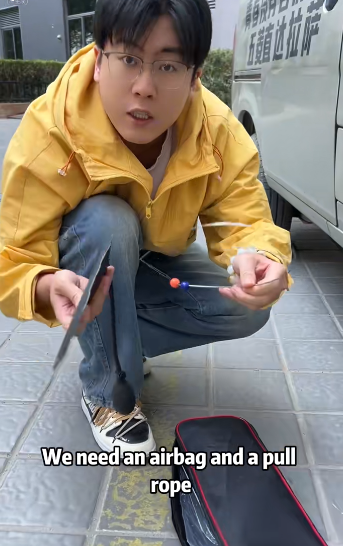
It’s a situation that can happen to anyone: you close the car door, hear the click, and realize—your keys are locked inside. Whether you’re in a rush to get to work, pick up the kids, or just get home, discovering that your car keys are locked in the vehicle can feel frustrating and even a little bit scary. But don’t worry—there are several safe and effective ways to get back into your car without damaging it. In this article, we’ll explore different methods to unlock your car door when the keys are trapped inside, from simple DIY tricks to professional solutions.
Step 1: Stay Calm and Assess the Situation
Before trying to force the door open, take a deep breath and carefully evaluate your surroundings. Are you in a safe place? Is there someone nearby who can help? Do you have a spare key with a family member or friend? Stress and panic might make the situation worse, so it’s important to stay composed and think clearly.
Check if any of the other doors or the trunk might be unlocked. Sometimes one door or the trunk may not have fully latched and could open with a little tug.
Step 2: Use a Spare Key
The easiest solution is to use a spare key, if you have one. Many people keep an extra key at home, in their purse, or with a trusted friend or relative. If you’re not far from home, consider getting a ride to retrieve it. This step may feel inconvenient, but it’s far simpler and safer than attempting to open the car yourself.
If your car came with a remote unlock feature or a mobile app (common in newer models), you may be able to unlock the door remotely.

Step 3: Try Unlocking Tools (Only for Manual Locks)
If your car has manual locks (as opposed to electronic locks), you may be able to use a few simple tools to unlock the door. Here are some common methods:
A) Use a Shoelace
This trick only works on cars with upright lock posts (the small knob that sticks up near the window).
- Take a shoelace or a piece of string about 3 feet long.
- Tie a small loop in the center of the string.
- Gently insert the string into the top corner of the car door.
- Wiggle it down until the loop is near the lock.
- Carefully pull the string so the loop tightens around the lock post.
- Pull up to unlock the door.
This technique requires patience and a bit of dexterity, but it’s worked for many people in a pinch.
B) Use a Coat Hanger or Slim Jim
For older vehicles with horizontal lock mechanisms, a wire coat hanger or a “Slim Jim” tool can help:
- Straighten the hanger and bend one end into a small hook.
- Gently slide it between the weather stripping and the window.
- Try to hook the locking mechanism and pull it up or push it sideways.
Warning: These tools can damage the car’s internal wiring or weather seal if not used properly. Newer cars often have anti-theft systems that make this method ineffective or risky.
Step 4: Use a Wedge and Rod
Another method involves creating a gap in the door using a wedge (such as a doorstop or inflatable bag) and inserting a long rod to hit the unlock button.
- Gently insert a wedge into the top corner of the driver’s door to create a small opening.
- Slide a thin, long tool (like a wire or coat hanger) into the gap.
- Try to press the unlock button or pull the lock open.
Important Note: Be very cautious with this method. Using too much force may bend the door or damage the paint and seal.

Step 5: Call Roadside Assistance
If the DIY methods don’t work—or if you don’t feel comfortable trying them—it’s time to call for help. Roadside assistance services like AAA, your car insurance provider, or other membership-based programs often offer lockout help.
Here’s how to proceed:
- Call the company’s emergency line.
- Provide your member number, vehicle info, and location.
- Wait for a technician to arrive (this can take anywhere from 15 minutes to an hour depending on your location).
These professionals have the proper tools and expertise to unlock your car without causing damage.

Step 6: Contact a Locksmith
If you don’t have roadside assistance or prefer a quicker option, a local locksmith can help. Automotive locksmiths are equipped to unlock your car, cut new keys, or even reprogram smart keys if necessary.
Before hiring a locksmith, be sure to:
- Ask for an estimate.
- Verify they are licensed and insured.
- Confirm they specialize in car lockouts.
Locksmiths may cost more than roadside assistance but are often available 24/7 and can resolve the issue promptly.
Step 7: Use Your Car Manufacturer’s Mobile App
Many modern vehicles come with a companion app from the manufacturer that includes remote unlock features. If you’ve set it up ahead of time, you might be able to unlock the car using your smartphone.
Some examples include:
- FordPass (Ford)
- myChevrolet (Chevrolet)
- Hyundai Blue Link
- Toyota Remote Connect
- HondaLink
Make sure you’ve registered your vehicle in the app in advance. You’ll need a signal or Wi-Fi to access the unlock feature.

Step 8: Prevent It From Happening Again
After you’ve successfully unlocked your car, take a few steps to avoid future lockouts:
- Keep a spare key: Store it somewhere safe at home or with someone you trust.
- Invest in a magnetic key holder: Hide a spare key under the car in a secure magnetic case (though this has risks if discovered).
- Use a key tracker: Devices like Tile or Apple AirTag can help you locate your keys quickly.
- Always check before locking: Make it a habit to verify that your keys are with you before shutting the door.

Final Thoughts
Locking your keys in the car is never fun, but it’s a common problem with several solutions. Depending on your vehicle’s lock type, available tools, and nearby help, you might be able to resolve it quickly. Whether you’re using a shoelace, calling roadside assistance, or reaching out to a locksmith, there’s always a way to get back on the road.
Remember: don’t panic. Every problem has a solution, and this one is more common than you might think. Just stay calm, consider your options, and take action that’s safe and smart for both you and your vehicle.



